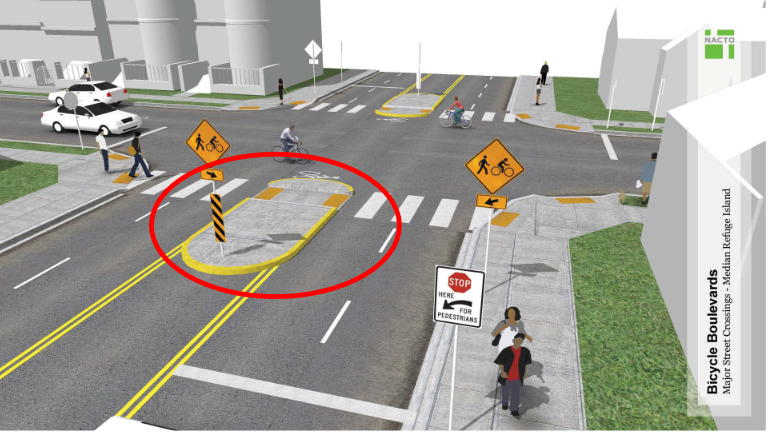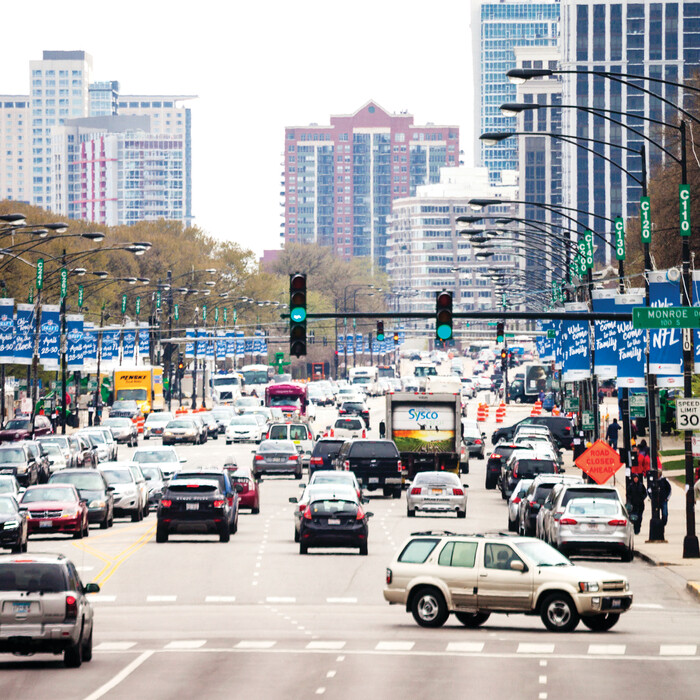A bill that would give local communities the ability to build intersections that are safer for people walking and biking passed out of the Illinois Senate and House and now heads to the governor’s desk. The bill was approved by the Illinois House by a vote of 87-25 on May 11.
Thank you to everyone who responded to our action alerts to advance SB 2278!
Currently, local communities are required to build intersections that will accommodate the turning of a 65-foot truck, which means there’s no space left for people-friendly design features at the intersection.
It’s no secret that we have far too many oversized intersections that act as a barrier — and a danger — for people getting around without a car.
As part of the current bill, local communities are required to report where trucks are allowed, which will feed into a state-mandated truckers’ GPS system. This element will help keep trucks off streets where they would be a greater danger to people walking and biking.
Stay tuned as SB 2278 makes its way to the governor’s desk.
ONE SIZE DOESN’T FIT ALL
When intersections must allow for the turning of 65-foot trucks, proven safety features like pedestrian islands, curb extensions, and protected bike lanes aren’t even considered. This results in wide intersections that are a danger to anyone who’s outside of a vehicle.
And all that extra space means that drivers often travel through the intersection and take the turns far too fast.
The danger of faster moving traffic is compounded by the fact that pedestrians have a longer distance to cross.
Children, older adults, and people with disabilities may simply find they are unable to access needed destinations if crossing one of these big intersections is required.
When we trim down the oversized intersections and make them more people-friendly, this is why it makes the street safer:
- We can add infrastructure proven to save lives: Pedestrian islands, curb extensions, and protected bike lanes.
- People walking and rolling are granted shorter crossing distances, which is especially important for children, older adults, and people with disabilities.
- People on the street experience a calmer, more inviting intersection and street environment.
Another drawback of oversized intersections is that they require more pavement, more storm water detention, and more consumption of green space (such as parkways and yards), even on streets where truck traffic is only an occasional need.
A REAL-LIFE EXAMPLE WITH FATAL CONSEQUENCES

A pedestrian refuge island like the one above was proposed and rejected on Irving Park Rd. in Chicago (an IDOT-controlled road) to accommodate trucks turning off of a local, one-way street, N. Bell Ave.
If that refuge island was built, it might have saved the life of Peter Paquette, who was killed by a motorist while trying to cross the street in June 2022.

